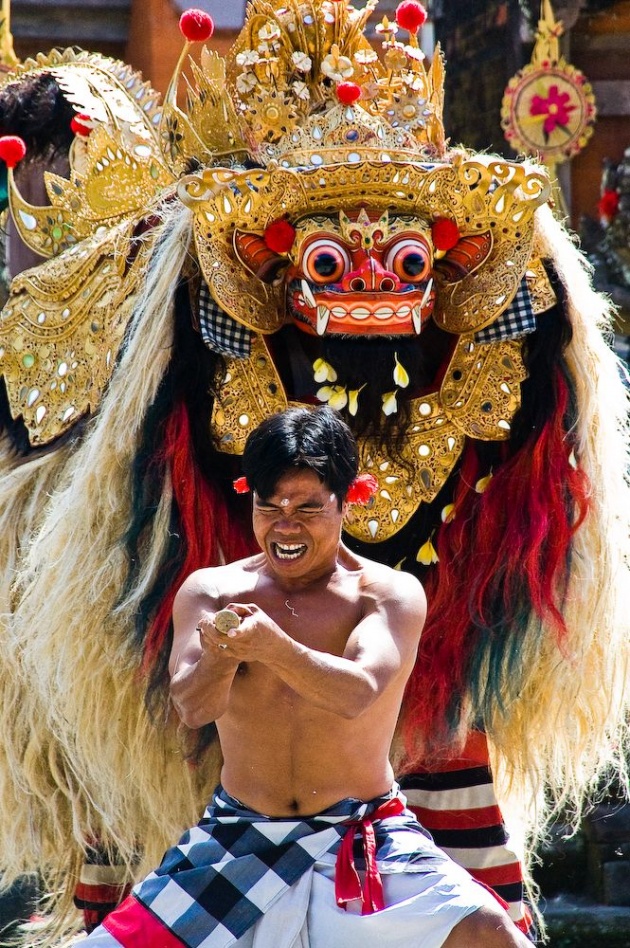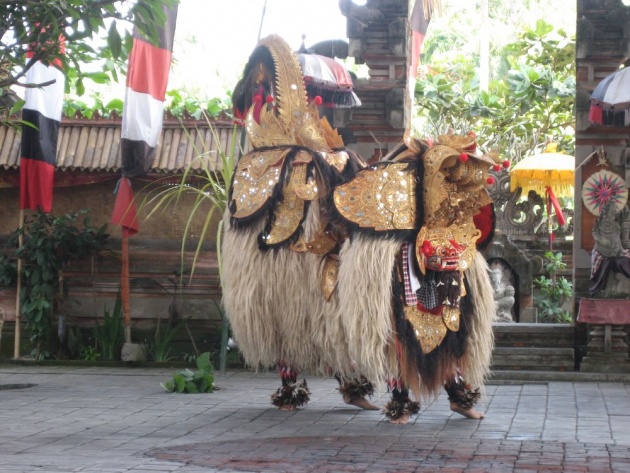Barong dance
The lion is the popular one, as it comes from the Gianyar region, where Ubud (the home of tourist's Balinese dance ritual viewing) is located. Within the calon arang, the dance drama in which the Barong appears, the barong responds to Rangda's use of magic to control and kill her to restore balance. In traditional Barong dance performances, he is portrayed in his struggles against Rangda, it is the popular part of Balinese culture. The mythical creature would dance along the street to the calon arang dance. A priest would throw holy water at it.
- The dance opens with two playful monkeys teasing Barong in a peaceful environment.
- The next scene is popularly known as "Keris Dance". The Rangda character appears and wreaks havoc. She casts black magic upon male dancers, who represent Airlangga's soldiers, and orders them to commit suicide. In a trance, these men stab themselves on their chest with their own kris. Meanwhile Barong and the priest cast protective magic on these men, which makes them invulnerable to sharp objects.
- The dance ends with the final battle between Barong and Rangda, concluding with the victory of Barong over Rangda. Rangda runs away, the evil is defeated, and the celestial order is restored.
Variations
The lion barong is one of five traditional Barongs. In Bali each region of the island has its own protective spirit for its forests and lands. Each Barong for each region is modeled after a different animal. They are:
- Barong Ket: lion barong, the most common Barong, it is the symbol of a good spirit.
- Barong Landung: giant barong, the form is similar to Betawi Ondel-ondel
- Barong Celeng: boar barong
- Barong Macan: tiger barong
- Barong Naga: dragon (or serpent) barong







